The file's group creator (group) has read permissions rwrr Others have read permissions represented by the last bits rwrr Now, let's see the default permission values for a directory Let's say the directory chmod_directory was created with the default permissions of 755 Unlike files, a directory has files in itImage link chmod permission for user I am trying to understand different permission for text file in linux , please refer the image i have attached i want to ask two question 1 when the text file only given read permission for user,i can move and rename file how it is possible if file has only readonly permission ?It is common to use the basic chmod command to change the permission of a single file However, you may need to modify the permission recursively for all files within a directory In such cases, the chmod recursive option (R or recursive) sets the permission for a directory (and the files it contains) The syntax for changing the file permission recursively is

A Deeper Dive Into Linux Permissions Network World
Chmod command to change permissions in linux
Chmod command to change permissions in linux-X Permission to execute the file, or, in the case of a directory, search it Types of permissions which we will be changing using chmod command In linux terminal, to see all the permissions to different files, type ls l command which lists the files in the working directory in long formatThe chmod system call cannot change their permissions



Linux File Permissions Complete Guide Devconnected
Lets change permission for user or groups In Linux Permission can be changed for 3 entities, user, group or other abhinav@ETHICALHACKX~/dir1$ chmod ux file1 abhinav@ETHICALHACKX~/dir1$ ls l file1 rwxrr 1 abhinav abhinav 0 kax 28 1908 file1 So we see the permission for user has now changed and now user has execute permissionSet permissions on files & directories using chmod in Ubuntu First, we will discuss user related permissions – this will make modifications to first three characters aforementioned To add permissions for a user, we can use following combinations – chmod ur ABCtxt chmod uw ABCtxt chmod ux ABCtxt where,Chmod is a great Linux command for manipulating file and directory permissions With the concepts mentioned in this article, you are equipped with sufficient knowledge to handle permissions in Linuxbased distros
9 Comments Originally posted October 13, 14 Bash, Shell, Terminal, Command Line cheat sheets linux Ubuntu Set the permissions for a file or directory by using the chmod command Each row has 2 examples, one for setting that permission for a file, and one for a directory named 'dir'Linux also has a way of enforcing different permissions for different users and groups Access Control Lists (ACLs) permit sysadmins to define permissions for more than just one user and one group, which adds a great deal more flexibility to standard permissionsOne of the most popular options that you can combine with chmod and chown is R (Recursive) This Linux option allows you to change permissions or owners of all files and subdirectories inside a specific directory If you want to use an option, you have to place it right after the chmod/chown command Take a look at this example chown R 755
Chmod command in Linux is used to change or assign permissions on files and directories In Linux / Unix systems, accessibility to files and directories is determined by file ownership and permissions In a previous article, we looked at how to manage file & directory ownership using the chown command In this tutorial, we look at the chmodIn Linux systems, the chmod command is used to change the permissions and access mode of files or directories This article explains how to use chmod command to change the access permissions of files or directories File Permissions in Linux# In Unix based systems, a set of permissions and modes are associated with each fileWhat Does chmod 777 Mean Setting 777 permissions to a file or directory means that it will be readable, writable and executable by all users and may pose a huge security risk This article explains the basic Linux permissions model and what the numbers corresponding to the permissions mean



Linux Permissions Making Sense Of 755 And Rwxr Xr X Serverwise



Linux Permissions Posix Chmod Chown Chgrp Youtube
Before you see the chmod examples, I would strongly advise you to learn the basics of file permissions in Linux Using chmod command will be a lot easier once you understand the permissions Chmod command in Linux What is chmod?Chmod Calculator is a free utility to calculate the numeric (octal) or symbolic value for a set of file or folder permissions in Linux servers How to use Check the desired boxes or directly enter a valid numeric value (eg 777 ) or symbolic notation (eg rwxrwxrwx ) to see its value in other formatsChmod 600 ~/ssh/id_rsapub (ie chmod u=rw,go= ~/ssh/id_rsa ~/ssh/id_rsapub) are correct chmod 644 ~/ssh/id_rsapub (ie chmod a=r,uw ~/ssh/id_rsapub) would also be correct, but chmod 644 ~/ssh/id_rsa (ie chmod a=r,uw ~/ssh/id_rsa) would not be Your public key can be public, what matters is that your



The Chmod Command And Linux File Permissions Explained



Linux File Permissions Explained Symbolic Permissions And Chmod Part 1 Youtube
Give read, write and execute permission to the file's owner, read permissions to the file'sThe chmod command changes the access permissions of files and folders The chmod command, like other commands, can be executed from the command line or through a script file If you need to list a file's permissions, use the ls commandOne of the most popular options that you can combine with chmod and chown is R (Recursive) This Linux option allows you to change permissions or owners of all files and subdirectories inside a specific directory If you want to use an option, you have to place it right after the chmod/chown command Take a look at this example chown R 755



Benefits Of Chmod Calculator Linux Permissions Online Calculator Calculator



File Permissions In Linux Unix How To Read Write Change
Description On Unixlike operating systems, a set of flags associated with each file determines who can access that file, and how they can access it These flags are called file permissions or modes, as in "mode of access"The command name chmod stands for "change mode" It restricts the way a file can be accessed For more information about file modes, see What Are File Permissions, And HowUsing chmod with Absolute Permissions The second way to modify permissions with the chmod command is to use a number to specify each set of permissions for the file Each permission is assigned a value, as the following table shows, and the total of each set of permissions provides a number for that setChmod stands for change mode This command is used for changing the mode of access



Linux File Permission Explained In Easy Language



Linux Cheat Sheet
Hopefully, this article helped you better understand file permissions in Unix systems and the origin of the magical number "777" Now that you've mastered file permissions, you may want to learn how to copy and paste text, files and folders in the Linux terminal or use sticky bit to manage files on shared directoriesNow (still on Linux) cd to the mount point (in my case, /data), ls l the files there Check whether their ownership and permissions match respectively that you specified in the UserMapping file and the umask you set in /etc/fstab (the match between permissions and umask requires some complement calculation, see man (1) umask for moreChmod 600 ~/ssh/id_rsapub (ie chmod u=rw,go= ~/ssh/id_rsa ~/ssh/id_rsapub) are correct chmod 644 ~/ssh/id_rsapub (ie chmod a=r,uw ~/ssh/id_rsapub) would also be correct, but chmod 644 ~/ssh/id_rsa (ie chmod a=r,uw ~/ssh/id_rsa) would not be Your public key can be public, what matters is that your



How To Manage User Permissions From The Gui On Linux Linux Com
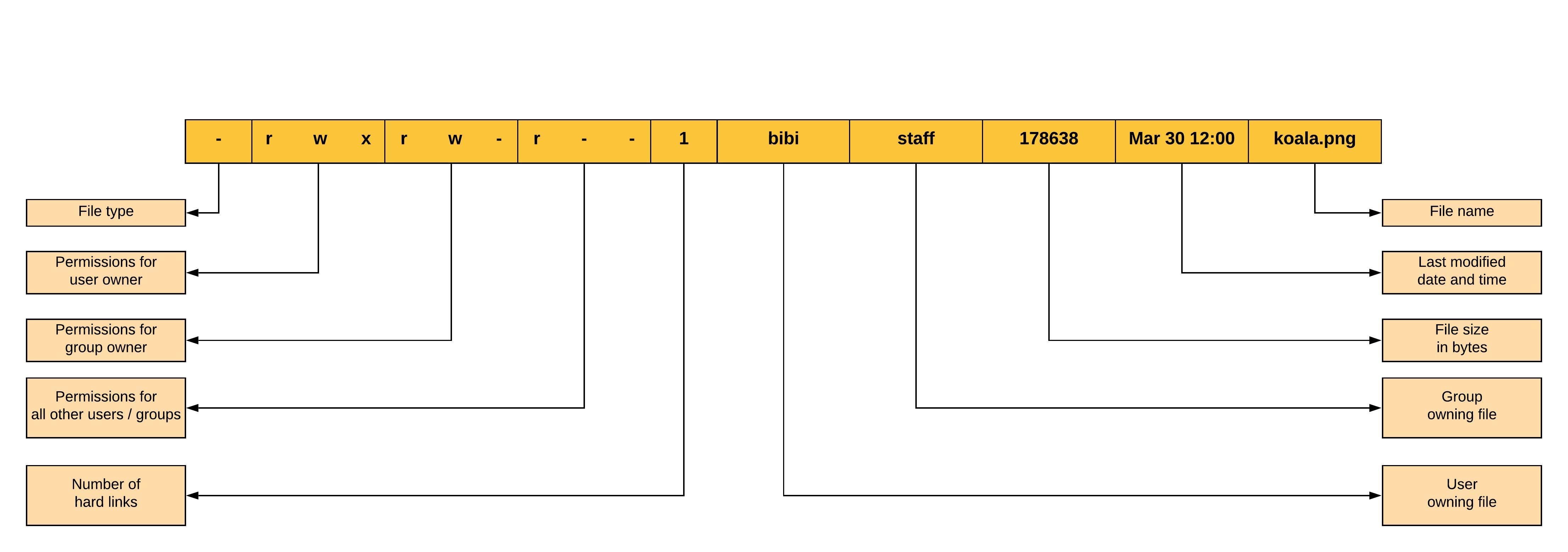


Linux File Permissions And Ownership By Udara Bibile Level Up Coding
The command chmod changes the file mode bits of each given file according to mode, which can be either a symbolic representation of changes to make, or an octal number representing the bit pattern for the new mode bits chmod never changes the permissions of symbolic links;Since you've broken a tree of directory permissions with chmod R you need to fix them all up Run this from the directory above dir find dir type d exec chmod u=rwx,go=rx {} find dir \!The chmod command in Linux is used to change file and directory permissions using either text (symbolic) or numeric (octal) notation It takes the following syntax $ chmod OPTIONS MODE filename Only the root user or a regular user with sudo privileges can change file or directory permissions



File And Folder Permission Settings For Wordpress Folder On Linux Stack Overflow



Linux Chmod Recursive How To Change File Permissions Recursively
Changing File Permissions with chmod Only the owner of a file or root can change the permissions on a file This operation is not affected at all by the umask setting If you change permissions on a symbolic link, the link will be followed and you will change the target fileChmod u=rwx,g=rx,o=r myfile This example uses symbolic permissions notation The letters u, g,File Permissions in Linux/Unix Let's see file permissions in Linux with examples ls l on terminal gives ls l Here, we have highlighted 'rwrwr'and this weird looking code is the one that tells us about the Unix permissions given to the owner, user group and the world Here, the first '' implies that we have selected a filep>



Directory How Can I Change Permissions Of A Folder Including Its Enclosed Files And Subdirectories Ask Ubuntu



Give Write Access Chmod 775
9 Comments Originally posted October 13, 14 Bash, Shell, Terminal, Command Line cheat sheets linux Ubuntu Set the permissions for a file or directory by using the chmod command Each row has 2 examples, one for setting that permission for a file, and one for a directory named 'dir'Chmod ax permissions/file1 To allow write permission of file1 to the owner of the file chmod uw permissions/file1 Symbol is used to add specific permission to the file and – is used to remove permission to the file You can use R option with chmod command to recursively change permissions of directories and subdirectoriesIf you want an easy way to know the Linux file permission in numeric or symbolic mode, you can use this chmod calculator Just select the appropriate permissions and it will tell you the permissions in both absolute and symbolic mode Change permission on all the files in a directory recursively



How To Resolve Permission Denied Linux Error Ux Techno



File Permissions In Linux Unix Vk9 Security
The general chmod command syntax is the same command permissions directory/file Here is an example How do I remove the read permissions from others for file2 by using symbolic mode?Chmod 755 R /opt/lampp/htdocs will recursively set the permissions There's no way to set the permissions for files automatically in only this directory that are created after you set the permissions, but you could change your systemwide default file permissions with by setting umask 022The command chmod changes the file mode bits of each given file according to mode, which can be either a symbolic representation of changes to make, or an octal number representing the bit pattern for the new mode bits chmod never changes the permissions of symbolic links;



Ppt Agenda Powerpoint Presentation Free Download Id
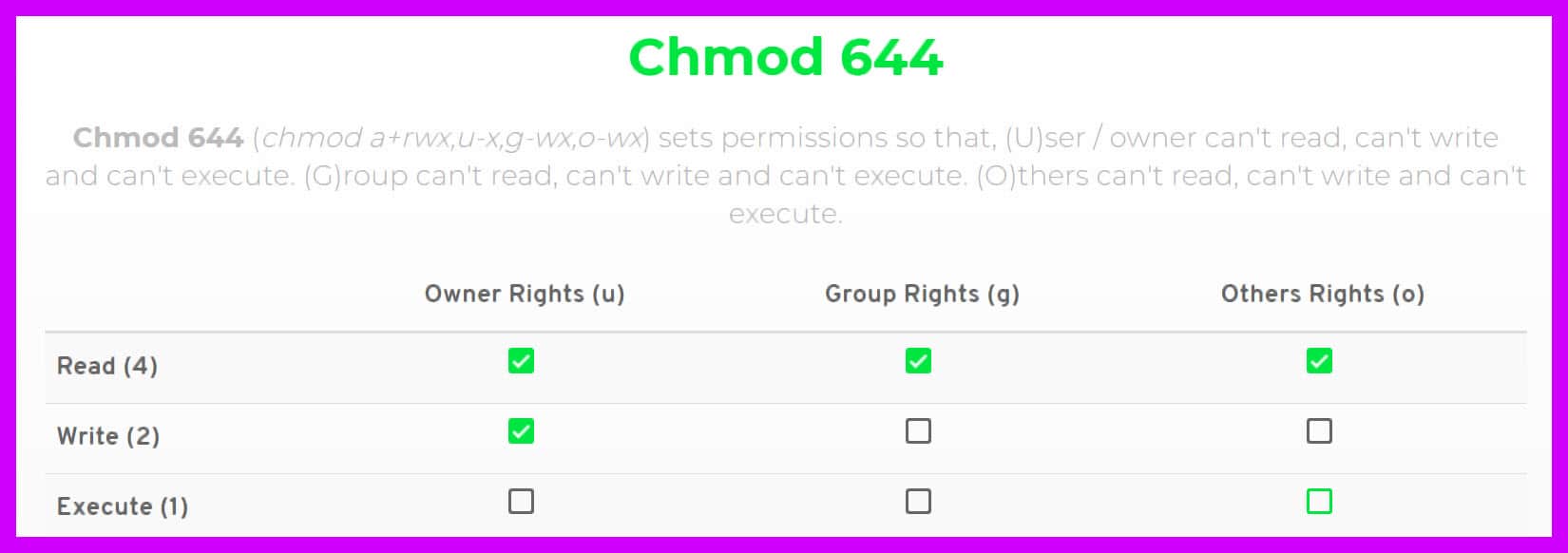


Chmod 777 A Definitive Guide To File Permissions
Chmod Modifies File Permissions In Linux, who can do what to a file or directory is controlled through sets of permissions There are three sets of permissions One set for the owner of the file, another set for the members of the file's group, and a final set for everyone else The permissions control the actions that can be performed on the file or directoryChmod 777When you set the permission 777, in this case, you allow permission to everyone read, write, and execute With this permission, anyone can make changes or copy files It is not advisable to set this kind of permission to the webserver or any certain files How to install authy in linux based system Recursively ChmodX Permission to execute the file, or, in the case of a directory, search it Types of permissions which we will be changing using chmod command In linux terminal, to see all the permissions to different files, type ls l command which lists the files in the working directory in long format



Chmod 777 A Definitive Guide To File Permissions



Understand Linux System File Permission
Chmod 775 file_name chmod ugrwx,o=rx file_name Both the commands give all permissions (code=7) to user and group, read and execute (code=5) for others Futher learning The default Linux security model is a bit inflexibleNote The chmod command can accept numeric integers, such as 0664, which relate to user permissions See this to help create these, if you wish I will cover using chmodType d exec chmod u=rw,go=r {} In case you're wondering, you need the x permission to access a directory



Chmod 777 What Does It Really Mean Make Tech Easier



Permissions And Executables A Primer For Computational Biology
The chmod system call cannot change their permissionsSet permissions on files & directories using chmod in Ubuntu First, we will discuss user related permissions – this will make modifications to first three characters aforementioned To add permissions for a user, we can use following combinations – chmod ur ABCtxt chmod uw ABCtxt chmod ux ABCtxt where,Chmod Command in Linux (File Permissions) Written by Admin, Updated On June 4, chmod, terminal In Linux systems, the chmod command is used to change the permissions and access mode of files or directories This article explains how to use chmod command to change the access permissions of files or directories


Chmod Calculator Sam Solomon



Linux Chmod Command Utility Software Computer File
Linux is a multiuser system and access to the files is controlled through the file permissions, attributes, and ownership In this article we'll explain how to recursively change permissions of files and directories# chmod or file2 This example removes () the read (r) permission from others (o) for file2Here's another simple exampleIn Unix and Unixlike operating systems, chmod is the command and system call which is used to change the access permissions of file system objects (files and directories)It is also used to change special mode flags The request is filtered by the umaskThe name is an abbreviation of change mode Modes are the filesystem permissions given to "user", "group" and "others" classes to access



Chmod Easy File Access Permissions And Modification In Linux 5 0 Raviolican



Permission Command How To Use Chgrp Trend Oceans
1 Read permission is added for all $ chmod ar file 2 Execute permission is removed for all $ chmod ax file 3 Change the permissions of the file to read and write for all $ chmod arw file 4 Read and write permissions are set for the owner, all permissions are cleared for the group and others $ chmod u=rw,go= file 5I would like to change the permissions of a folder and all its subfolders and files in one step (command) in Linux I have already tried the below command but it works only for the mentioned folder chmod 775 /opt/lampp/htdocs Is there a way to set chmod 755 for /opt/lampp/htdocs and all of its content including subfolders and files?Here is a simple chmod function that you can use in c# with no depencencies // Returns true if success and false otherwise // permissions can be an int or a string



Explained How To Use Chmod Command Complete Guide Youtube



Sticky Bit In Linux
Using chmod with Absolute Permissions The second way to modify permissions with the chmod command is to use a number to specify each set of permissions for the file Each permission is assigned a value, as the following table shows, and the total of each set of permissions provides a number for that setChmod command in Linux is used to change or assign permissions on files and directories In Linux / Unix systems, accessibility to files and directories is determined by file ownership and permissions In a previous article, we looked at how to manage file & directory ownership using the chown command In this tutorial, we look at the chmod


File Permissions Chmod Page 2 Linux Org



08 Unix Linux Shell File Directories Permission Chmod Command Youtube



How To Assign Permissions To Files And Folders In Cpanel Cpanel Blog



Directory How Can I Change Permissions Of A Folder Including Its Enclosed Files And Subdirectories Ask Ubuntu



D 6 Permission Issues And How To Troubleshoot Engineering Libretexts



Chmod Octal Chart Zerse
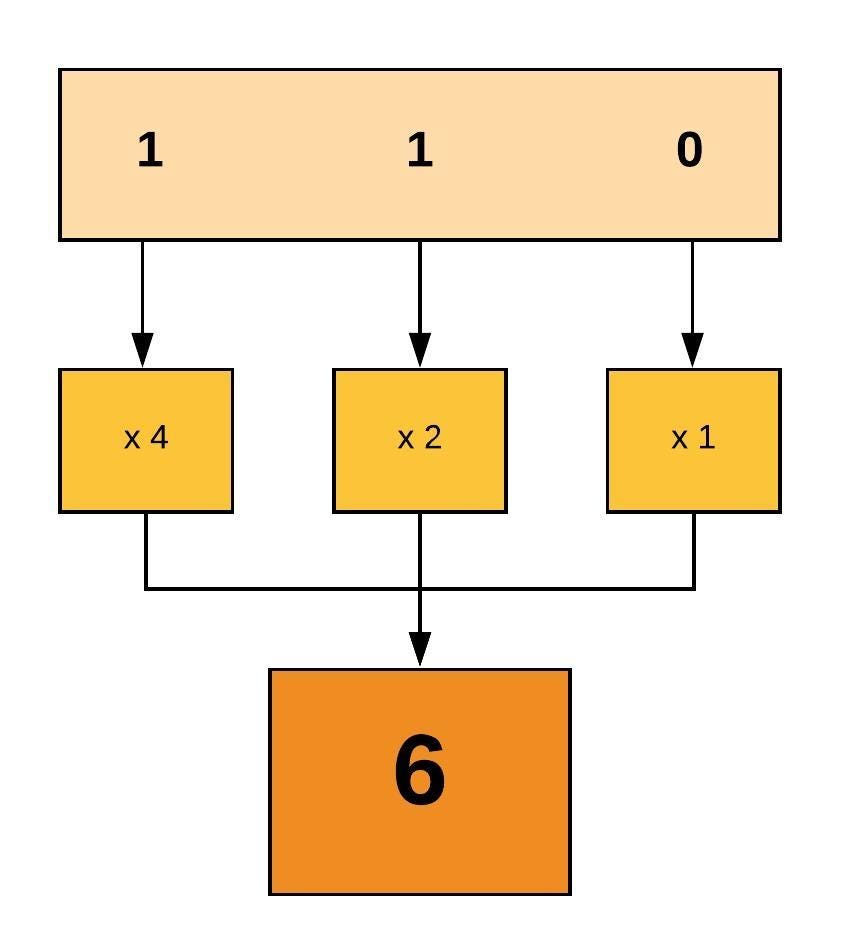


Linux File Permissions And Ownership By Udara Bibile Level Up Coding



How To Set Directory Permissions With Chmod On Linux Youtube



Permissions How To Refresh Privileges On A Script Ask Ubuntu



A Deeper Dive Into Linux Permissions Network World


Change Read Write Access Unix


Give Write Access Chmod 775



Access Control Lists Acl In Linux Geeksforgeeks



Linux Permissions Meryll Larkin That S Me Why You Are Here You Do This At Work Or Want To General Curiosity Want To Learn Your First Choice Ppt Download



Permissions And Ownership Chown Chmod On Redhat Linux Using Vmware Workstation Vmware Workstation Linux Youtube


I Made This Chmod Cheat Sheet And Thought It Might Be Useful Linux4noobs



Linux For Programmers File Permissions And Chmod



Chmod X Explained Everything You Need To Know



How To Change File Permissions In Linux Skillsugar



Added By Galpeartech Instagram Post Update And Refresh Your Linux Knowledge Follow Galpeartech Chmod Is One Of The Most Important Command Which You Can Use To Change The Permission In Linux System


Chown Chmod



Chmod How To Set File And Directory Permission In Linux Using Chmod Youtube



Chmod Calculator Takes The Hassle Out Of Directory Permissions Techfruit


Solved Codio Linux Users And Permissic X X Gt C A Codio Com Jdarwish Linux Users And Permissions Terminal Backend Guide J I Apps M Gmail Course Hero



Julia Evans Unix Permissions



Change File And Folder Permission On Ubuntu Chmod Chown Command In Linux Youtube



Unix It S Me Tommy



Linux File Permissions And Chmod Mrleet



Linux File Permissions Complete Guide Devconnected



Quiz Worksheet Special Permissions Access Control Filesystem Attributes In Linux Study Com



Chmod Command In Linux With Examples Geeksforgeeks



Unix Linux Permissions Calculator For Android Apk Download
/GettyImages-1021092796-ea8c63ee76f84bd5bf98c4222337fbb4.jpg)


How To Use The Chmod Command In Linux



Bif703 File Permissions Ppt Download



Solved File Permissions In Unix Command And Python I Hav Chegg Com



What Is Chmod In Windows



How To Manage File Permissions On Ubuntu Server 04 Dev Tutorial
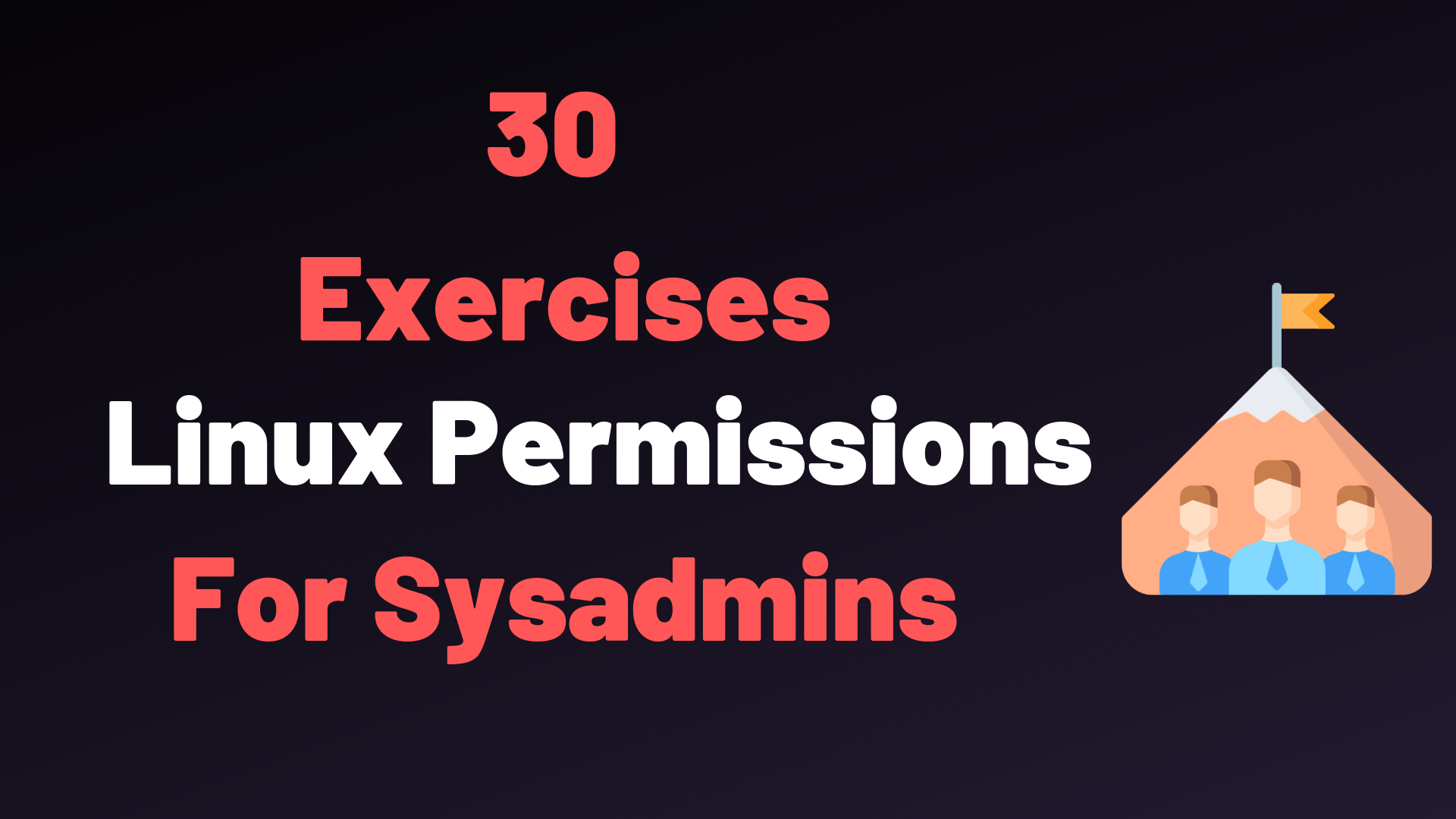


30 Linux Permissions Exercises For Sysadmins Devconnected



Change Permissions Of Files And Folders In Filezilla In Your Linux Hosting



How Can I Fix The Permission Problem Crostini



Learn Linux Write Up Muirlandoracle Blog



How To Manage Linux Permissions For Users Groups And Others Enable Sysadmin



Linux Hayward Dot Click



How Do Linux Permissions Work



Teknixx Useful Chmod Sheet Also Check Managing Linux Permissions Http T Co Wvto9iejho Linux Sysadmin Http T Co 4vmufxnlwt



Solved Part 2 Linux Shell Scripting Worth 5 Points C Chegg Com



How To Modify The File S And Directories Permission In Linux Vasanth Blog


Set Permissions On Files Directories Using Chmod In Ubuntu Techpiezo



Linux File Permissions And Ownership By Udara Bibile Level Up Coding



An Introduction To Linux File Permissions Boolean World


Linux User Group And File Permission Introduction



Permission Denied Inside Var Www Html When Creating A Website And It S Files With The Apache2 Server Stack Overflow



How To Use The Chmod Command 2 Minute Linux Tips Network World



Give Permissions In Ubuntu Itechzo Give Permissions In Ubuntu



Change File Permissions Easily With Online Chmod Calculator By Chmodcalcu Issuu



Devrant A Fun Community For Developers To Connect Over Code Tech Life As A Programmer



Linux Commands 5 File Permission Chmod Youtube



Linux Rookie Basic Learning 3 File Permissions Programmer Sought



Bug Report Chmod 700 Sys Doesn T Work On Kali Issue 605 Cypherpunkarmory Userland Github
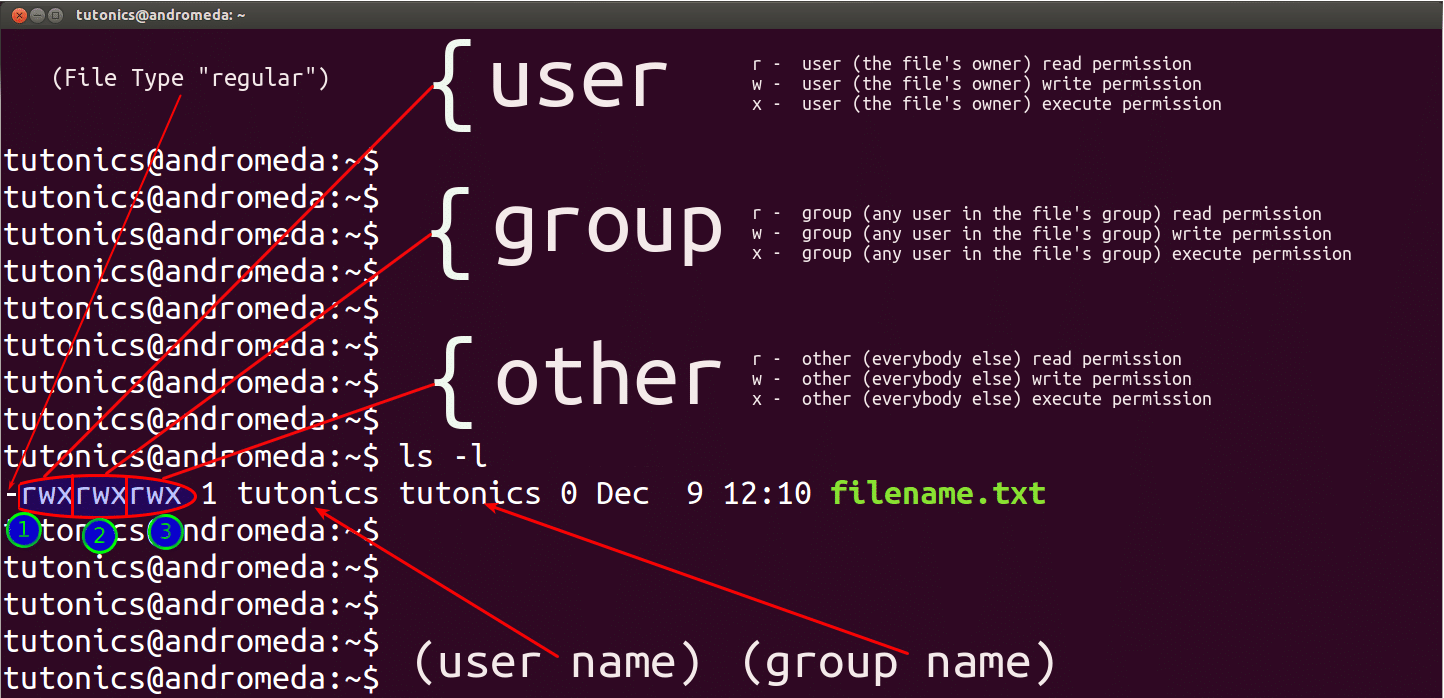


Linux File Permissions Tutorial For Beginners



How To Use Chmod Command In Linux Explained With Examples
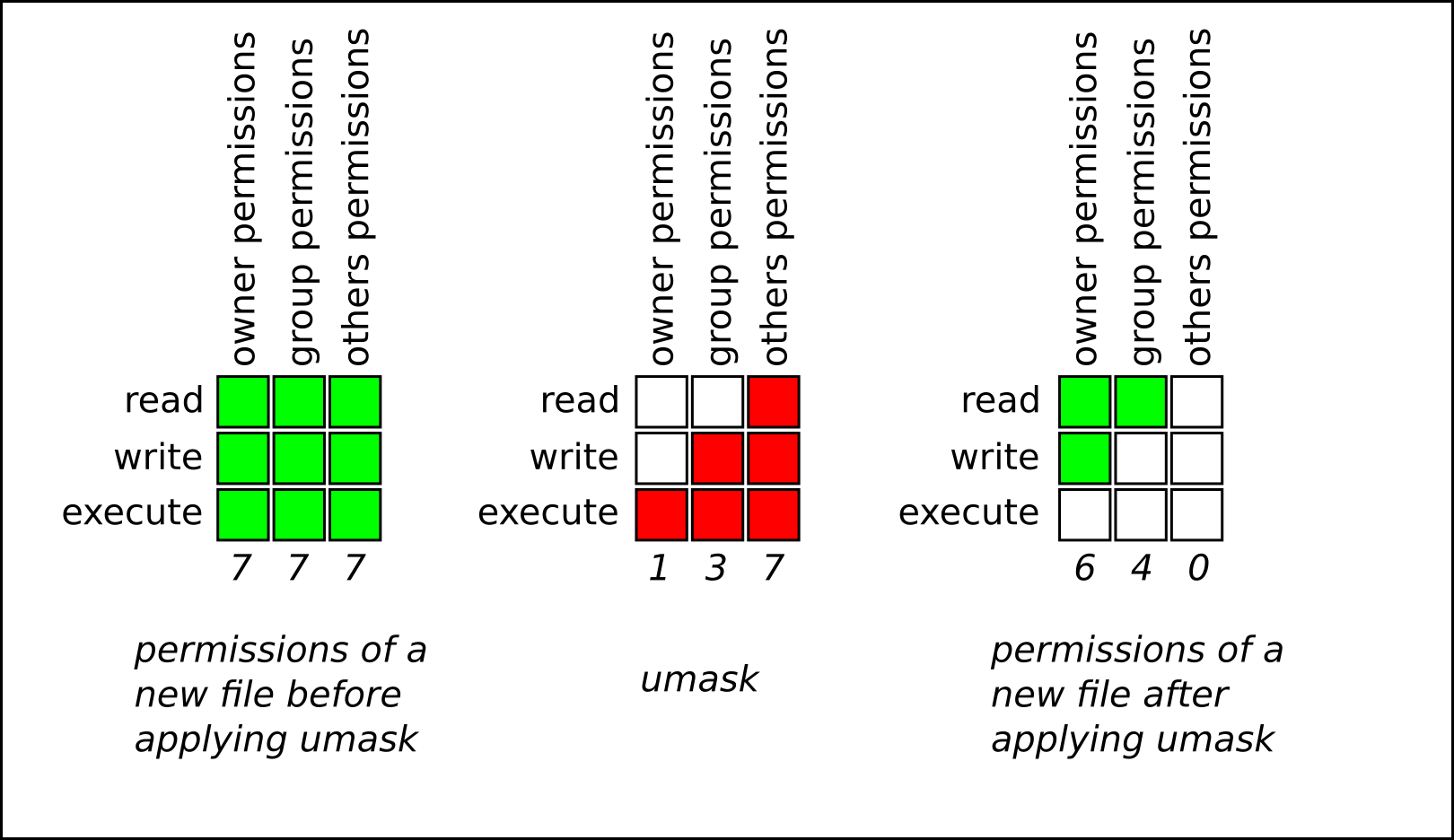


Chapter 10 Managing File Permissions Red Hat Enterprise Linux 8 Red Hat Customer Portal



Chmod 775



Sticky Bit In Linux


Cheatsheets And Tutorials For Users New To Linux Based Operating Systems General Discussion Osmc Forums



Change Permissions Linux Changing Permissions In Linux System Dev Community
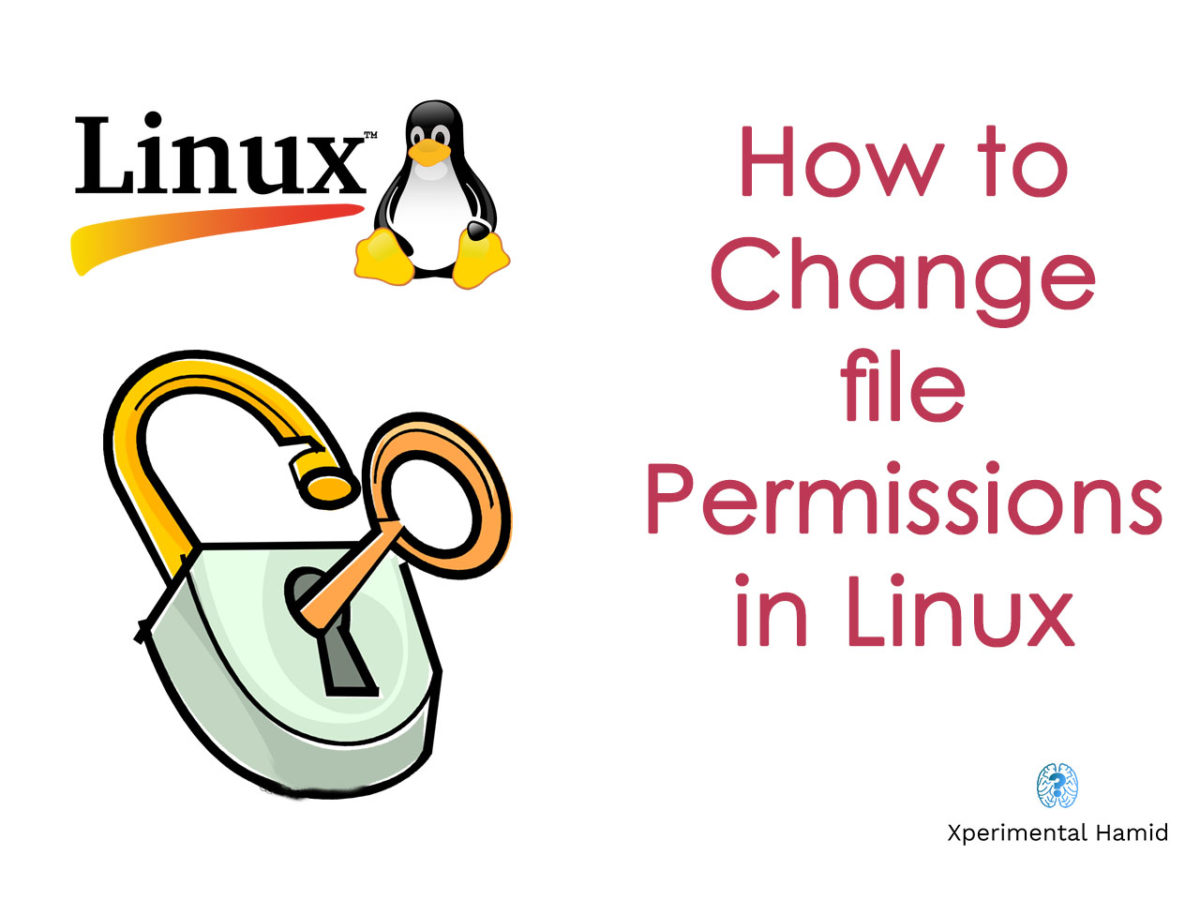


How To Change File Permissions In Linux Xperimentalhamid



Some Helpful Linux Commands Recently For A Coding Challenge I Was By Kate Schlunz Medium



Linux Terminal File Permissions Chmod Chown And Chgrp Linux Line Tools Thing 1
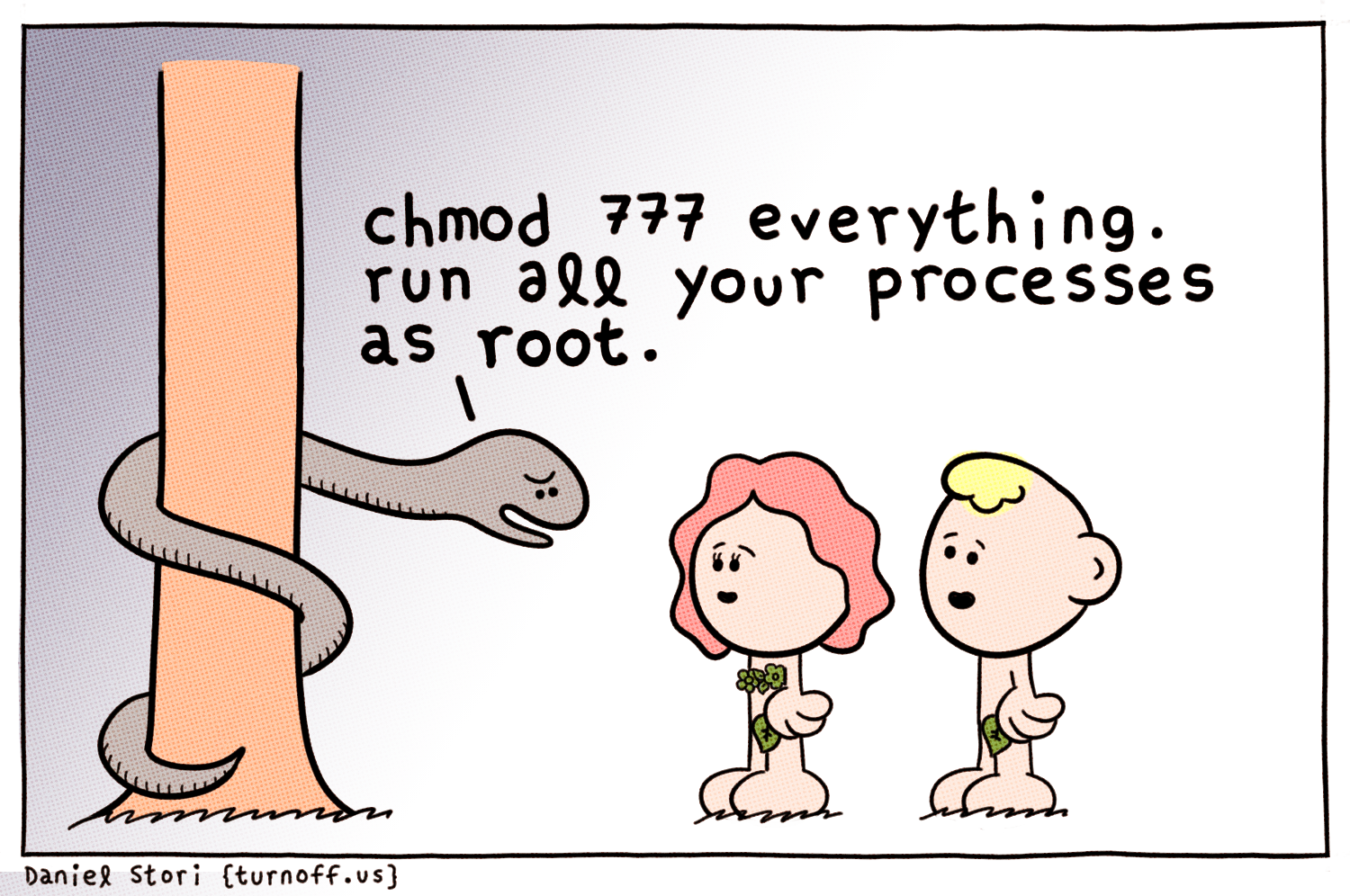


Chmod 777 Comic Dzone Security


